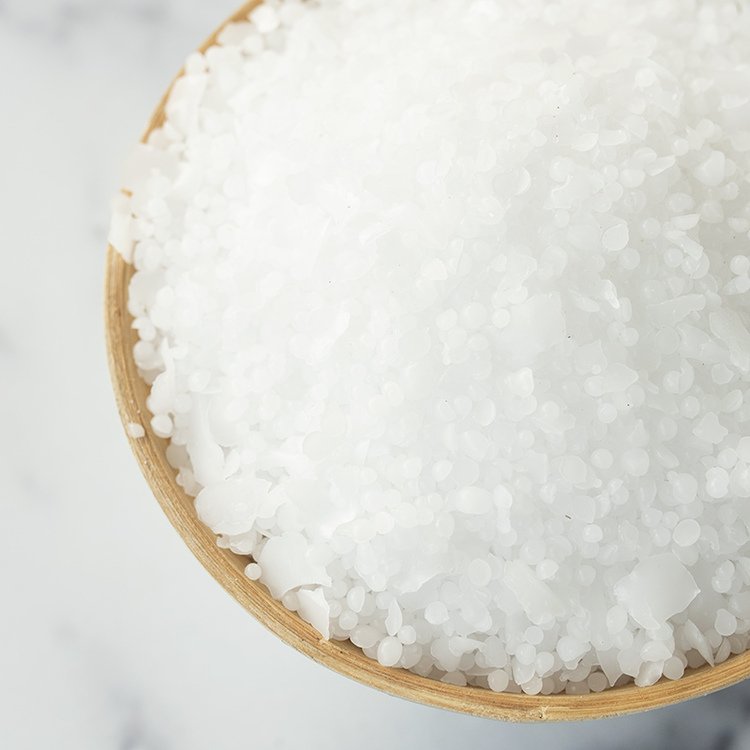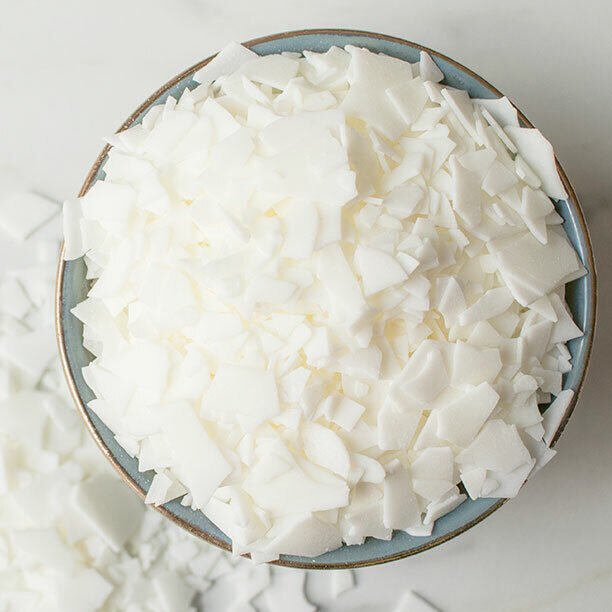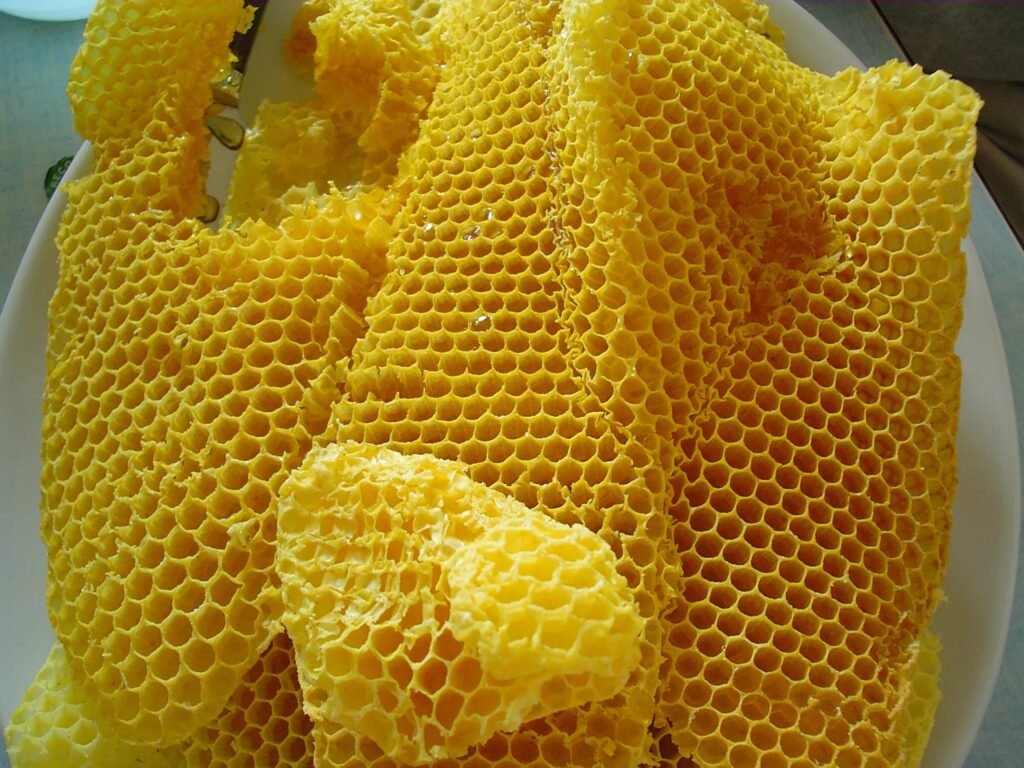A lot of people ask this question, “What’s the best candle wax?
Before we answer the question, we need to know that there are many kinds of wax, a wide range of substances available, and from many natural resources, all kinds of wax can be poured into containers or made by hand into various shapes and sizes.
So the best answer is not always a direct answer. There are many reasons why one wax is more suitable than another. Here are a number of different types of candle wax, along with some thoughts on their advantages, disadvantages, and other important considerations.
Paraffin

Paraffin was first created in 1830 by Carl Reichenbach of Germany and has long been recognized for its opaque, colorless, tasteless and stable combustion quality. It is widely used, with a variety of melting points, suitable for different types of candles, such as wishes, columns and containers. Paraffin is the most common of all waxes. This is because paraffin offers many advantages, making it a fairly reliable candle wax.
With excellent cold and hot throws, paraffin keeps the scent well, produces a stronger smell when burned, and throws farther away.
They come in many varieties and have different melting points. This means it can be shaped into a variety of shapes, from large, cylindrical candles to long, narrow, tapered candles to origami-sized animals. Paraffin wax can also be poured into jars or glass containers.
Easy coloring is preferred for creative candle making.
The supply is plentiful and the price is cheap.
However, paraffin wax is not always the best choice for candle making.
It burns fast because the wax produces a lot of heat when it burns, which speeds up the burning process, so your candle doesn’t last very long.
Most controversially, many people think that paraffin wax is not very green. As a by-product of crude oil refining and the entire petroleum industry, combustion produces carcinogens and pollutes the environment. Other experiments, however, have shown that processed paraffin, which is clean and hygienic, has no direct effect on human health. If you are allergic, it is best not to use paraffin candles.
Soy wax

Soy wax is made from harvested soybeans that are washed, shelled, broken and rolled into thin sheets. The soybean oil is then extracted and hydrogenated. With the demand for natural candles, soy wax is becoming more and more popular, gradually replacing paraffin wax as a choice for more natural wax lovers.
People often compare soy wax with paraffin wax, so let’s understand the advantages of soy wax.
Because soybean wax is denser, its crystal structure is smaller, and the crystal structure of paraffin wax is larger. As a result, soy wax is softer and more pliable than paraffin, which provides a significant advantage: higher melting points and slower burning times.
Soy wax is also healthier than paraffin. It emits less soot and less toxins. soy wax is considered to be environmentally friendly, natural, renewable and biodegradable.
Compared with other natural waxes, bean wax is more affordable.
Easy to clean, is almost the best choice for making container candles.
Beeswax

Beeswax is the oldest wax and has been around for thousands of years, even dating back to Egyptian times. Beeswax is a fatty substance secreted by worker beeswax glands, which is taken from the nest spleen.
Like soy wax, beeswax is eco-friendly and sustainable. Since beeswax is taken from a honeycomb, a beeswax candle even gives off a faint sweet smell in the air.
Smokeless, soot-free burn, is thought to clean the air.
The Beeswax has strong applicability and can be used for cylindrical candles or container candles
Unfortunately, the subtle and sweet aroma of beeswax is also a drawback. Beeswax works best in scented candles. However, this sweetness does not mix well with other aromas.
Coconut Wax

Coconut wax is a relatively new wax that comes from coconut, a sustainable high-yield crop, and is hydrogenated into a waxy solid similar to soybean wax. Coconut candle wax is relatively soft and creamy like virgin coconut oil.
Like soy and beeswax, coconut wax produces less soot and burns cleaner.
Compared with other candle wax types, it has a lower melting point. This makes it ideal for making essential oil candles or faster candle making in general, and many candle makers mix it with soywax to get the perfect candle.
- Although coconut wax comes from high-yield crops, coconut is used in many other applications, from food to beauty products, which makes it more expensive.
Palm Wax

It’s a plant wax, from Brazil, made from palms that are collected and dried from the leaves of the palm tree, beaten to loosen the wax, then refined and bleached.
It also features natural, harmless, long-lasting burning, but most importantly, its candle surface is prone to natural feathery and crystalline patterns, which makes it ideal for use as a pillar candle or a wish candle, it also contains candles of various colors, and the properties of palm wax make it possible to make very delicate candles.
However, its price is relatively expensive and, on the whole, it is worth it.

Summarize:
The best choice for modeling candles or pillar candles: paraffin.
The best choice for container candles: soy wax, coconut Wax.
Comprehensive Candle Selection: Beeswax, Palm Wax.
- We have introduced 4 kinds of wax, so which one do you like?
- Please let us know in the comments.

11 Responses
Ищете проверенную помощь в уборке вашей в Санкт-Петербурге? Наша группа специалистов гарантирует чистоту и и порядок в вашем доме! Мы применяем только безопасные и действенные средства, чтобы вы могли наслаждаться свежестью без хлопот. Переходите https://chisto-v-srok.ru – Генеральная уборка квартиры цена
Ищете надежную помощь в уборке квартиры в Санкт-Петербурге? Наша команда профессионалов дает гарантию чистоту и порядок в вашем доме! Мы применяем только безопасные и эффективные средства, чтобы вы могли наслаждаться свежестью без хлопот. Жмите https://klining-uslugi24.ru – Стоимость уборки офисных помещений Не упустите шанс сделать свою жизнь легче и комфортнее.
Уборка в Санкт-Петербурге! Перестаньте паниковать, доверьтесь профессионалам! Закажите прямо сейчас Нажимайте https://service-cleanspb.ru
Уютная обивка утратила былй лоск? Воскрешение мягкой мебели на дому в СПб! Подарим вторую жизнь диванам, креслам и коврам их истинную красоту. Экспертные средства и знающие свое дело мастера. Бонусы новобранцам! Детали ждут вас! Переходите Химчистка дивана от мочи
Уборка после ремонта? Скажите “нет” грязи! Идеальный порядок квартир и домов. Оперативно, тщательно, с гарантией! Нажимайте https://klining-posle-remonta24spb.ru – СПб клининговые компании
Выбирайте https://himchistka-msk24.ru
[b] Portable balancer & Vibration analyzer Balanset-1A [/b]
[b] Description: [/b]
[url=https://allegro.pl/oferta/balanser-dynamiczny-balanset-1a-oem-set-16713019136][img]https://vibromera.eu/wp-content/uploads/2021/11/%D0%91%D0%B0%D0%BB%D0%BA%D0%BE%D0%BC%D0%9A%D0%B8%D1%82-scaled-e1732998877834.jpg[/img][/url]
[b]Price:[/b]
7500 PLN / 44250 CZK / [b]1751 EUR[/b] / 715000 HUF [b]Full kit[/b] [url=https://allegro.pl/oferta/przenosny-wywazarka-i-analizator-drgan-balanset-1a-kompletny-zestaw-16654413800] Order on Allegro [/url]
6700 PLN / 39550 CZK / [b]1561 EUR[/b] / 640000 HUF [b]OEM kit[/b] [url=https://allegro.pl/oferta/balanser-dynamiczny-balanset-1a-oem-set-16713019136] Order on Allegro [/url]
Get a [b]€100[/b] discount on the official website [url=https://vibromera.eu/shop/874/]vibromera.eu[/url] with promo code [b]VB100[/b]
[b]Overview of the Balanset-1A Device[/b]
The Balanset-1A is a compact, dual-channel device designed for balancing and vibration analysis of rotating mechanisms. It is ideal for balancing rotors such as crushers, fans, mulchers, choppers, shafts, centrifuges, turbines, and other rotating machinery.
[b]Main Functions and Features[/b]
[b]Vibration Meter Mode[/b]
Tachometer: Accurate measurement of rotational speed (RPM).
Phase: Measures the phase angle of vibration signals for detailed analysis.
1x Vibration: Measurement and analysis of the primary frequency component.
FFT Spectrum: Thorough analysis of the vibration signal’s frequency spectrum.
Overall Vibration: Monitoring the total vibration level.
Measurement Log: Stores data for subsequent analysis.
[b]Balance Mode[/b]
Single-Plane Balancing: Adjusts rotors in one plane to reduce vibration.
Two-Plane Balancing: Dynamic adjustment of rotors in two planes.
Polar Diagram: Displays imbalance on a polar diagram for accurate weight placement.
Last Session Recovery: Allows the previous balancing session to be resumed.
Tolerance Calculator (ISO 1940): Computes allowable imbalance as per ISO 1940 standards.
Grinding Wheel Balancing: Utilizes three counterweights to balance grinding wheels.
[b]Graphs and Visualizations[/b]
Overall Graphs: Visualizes overall vibration levels.
1x Graphs: Shows the primary frequency vibration characteristics.
Harmonic Graphs: Analyzes the presence and impact of harmonic frequencies.
Spectral Graphs: Visual representation of the frequency spectrum for thorough analysis.
[b]Extra Capabilities[/b]
Archive: Store and revisit past balancing data.
Reports: Generate detailed balancing reports.
Rebalancing: Simplifies rebalancing using stored data.
Serial Production Balancing: Perfect for mass production rotor balancing.
[b]Supplied with[/b]
The package contains:
A measurement block with an interface.
A pair of vibration sensors.
Laser tachometer with magnetic mount.
Electronic scales.
Software (laptop sold separately).
Plastic transport case.
[b]Price:[/b]
7500 PLN / 44250 CZK / [b]1751 EUR[/b] / 715000 HUF [b]Full kit[/b] [url=https://allegro.pl/oferta/przenosny-wywazarka-i-analizator-drgan-balanset-1a-kompletny-zestaw-16654413800] Order on Allegro [/url]
6700 PLN / 39550 CZK / [b]1561 EUR[/b] / 640000 HUF [b]OEM kit[/b] [url=https://allegro.pl/oferta/balanser-dynamiczny-balanset-1a-oem-set-16713019136] Order on Allegro [/url]
Get a [b]€100[/b] discount on the official website [url=https://vibromera.eu/shop/874/]vibromera.eu[/url] with promo code [b]VB100[/b]
Перемещайтесь к https://uborka-v-spv24pro.ru – Уборка офисных помещений СПб
Приборка в Питере! Квартиры, Дома, Офисные помещения. Квалифицированный клининг по лояльным стоимости. Освободите свой график! Напишите нам клининг прямо сейчас! Заходите https://uborka-top24.ru
Очистка в Санкт-Петербурге! Комнаты, Загородные резиденции, Рабочие помещения. Опытный обслуживание по бюджетным ценам. Позвольте себе расслабиться! Обратитесь к нам очистку не откладывая! Двигайтесь к https://kliningovaya-uborka-spb.ru – Клининг компания
**mind vault**
mind vault is a premium cognitive support formula created for adults 45+. It’s thoughtfully designed to help maintain clear thinking